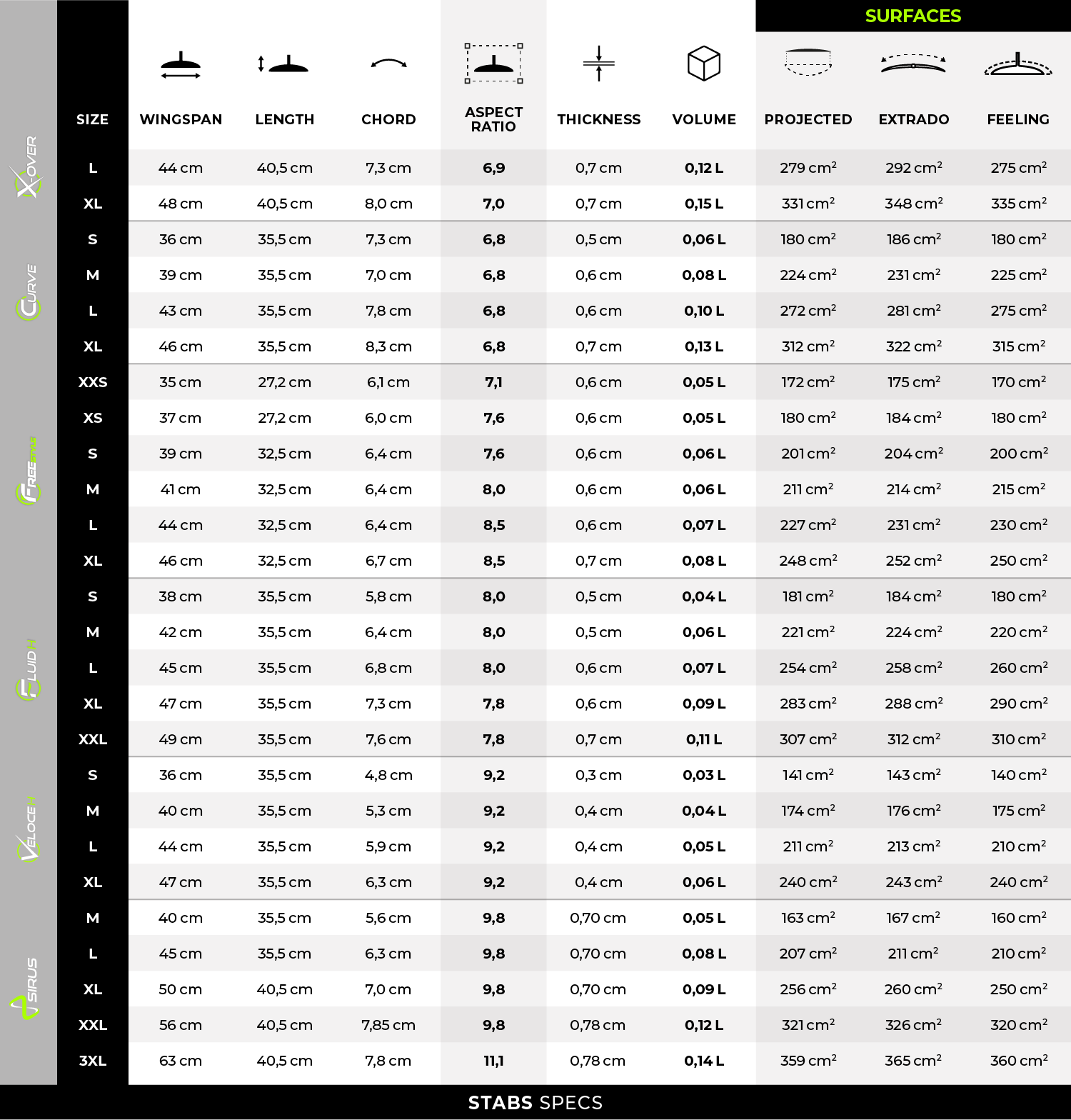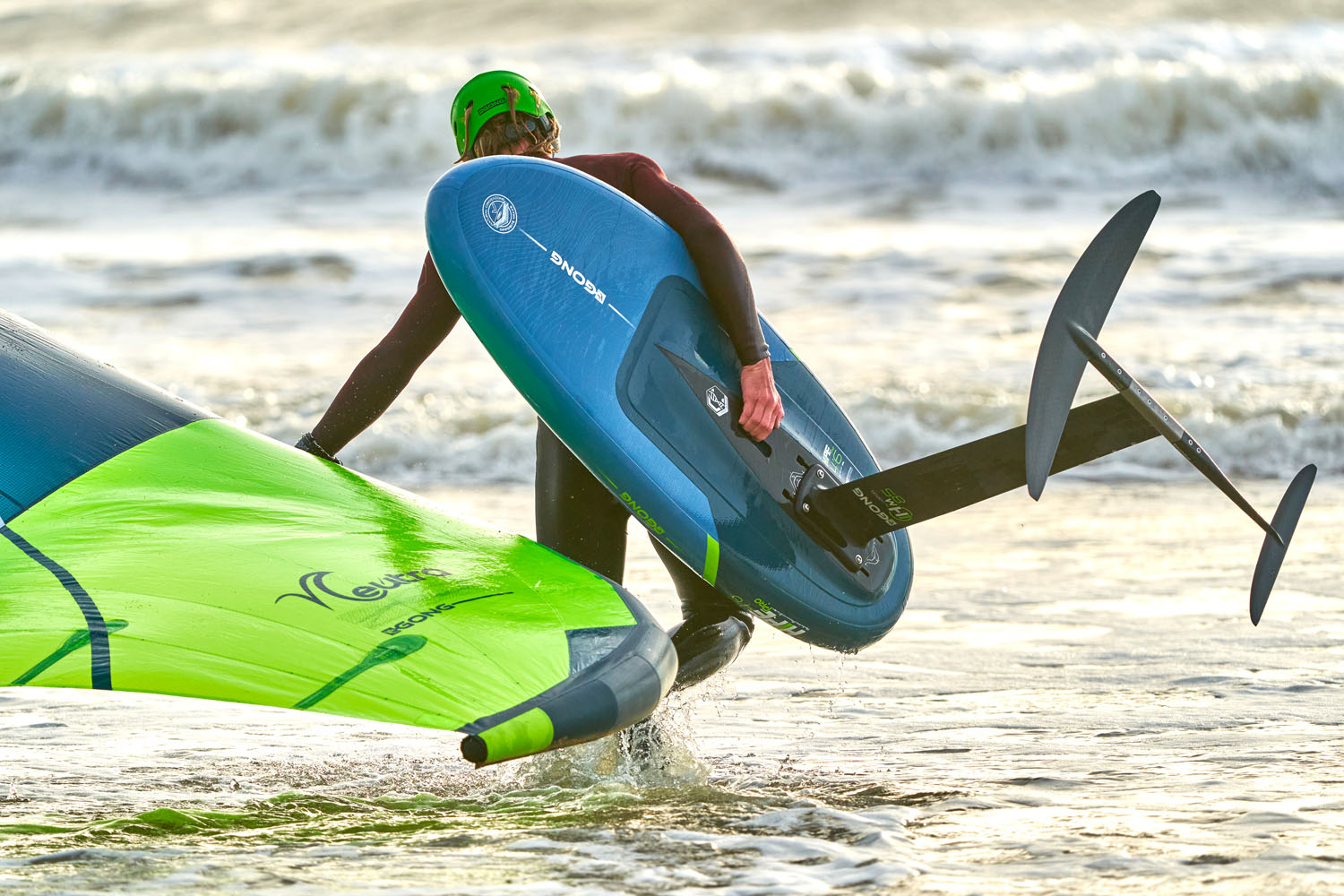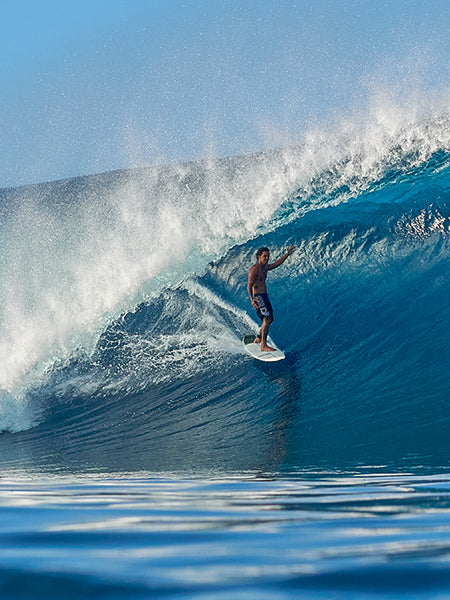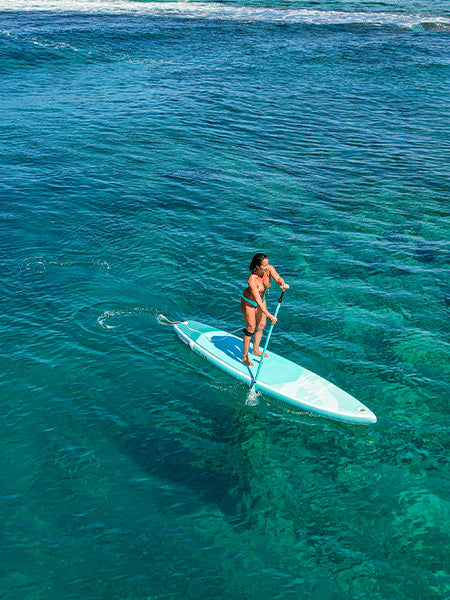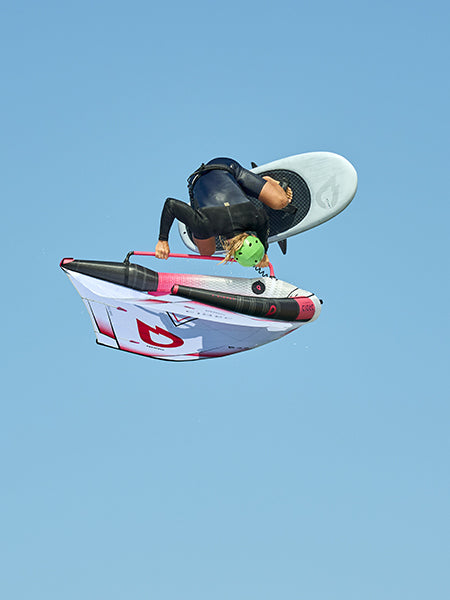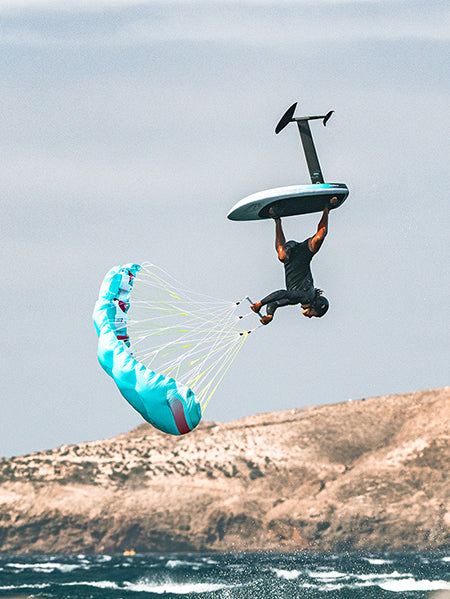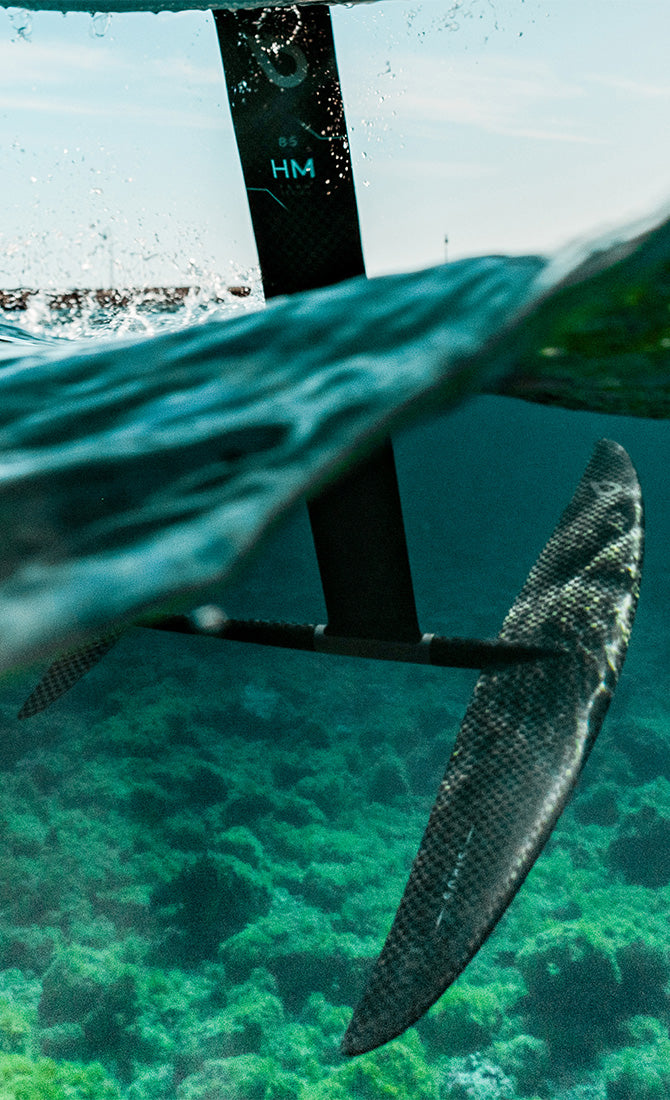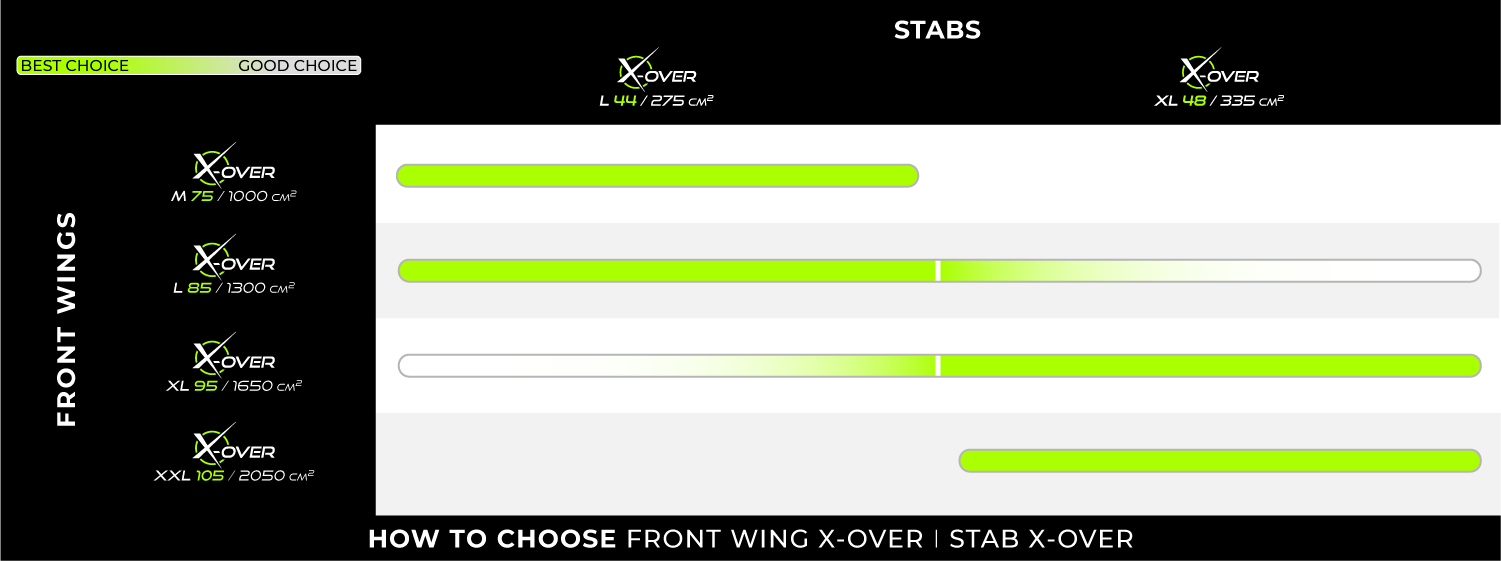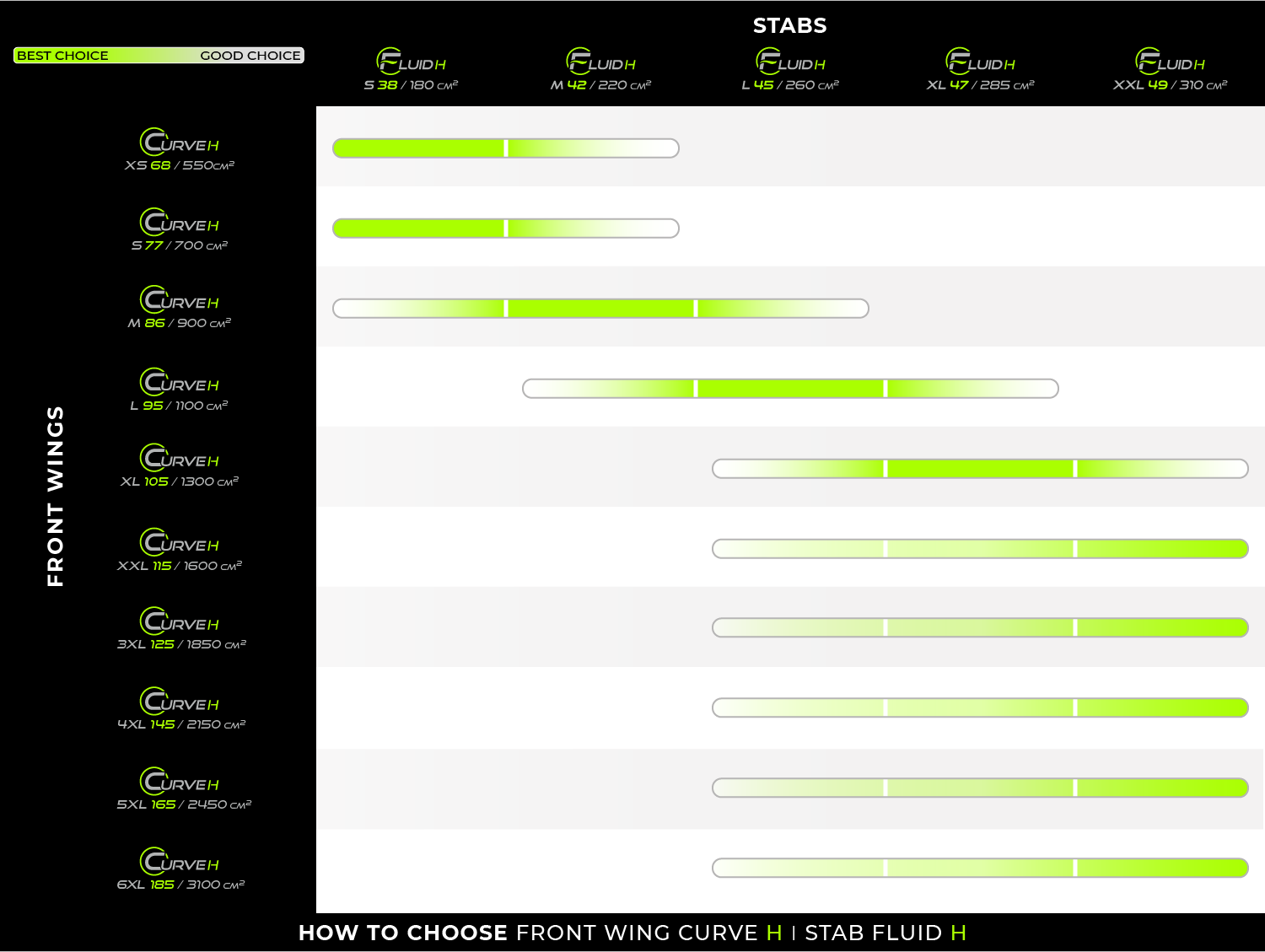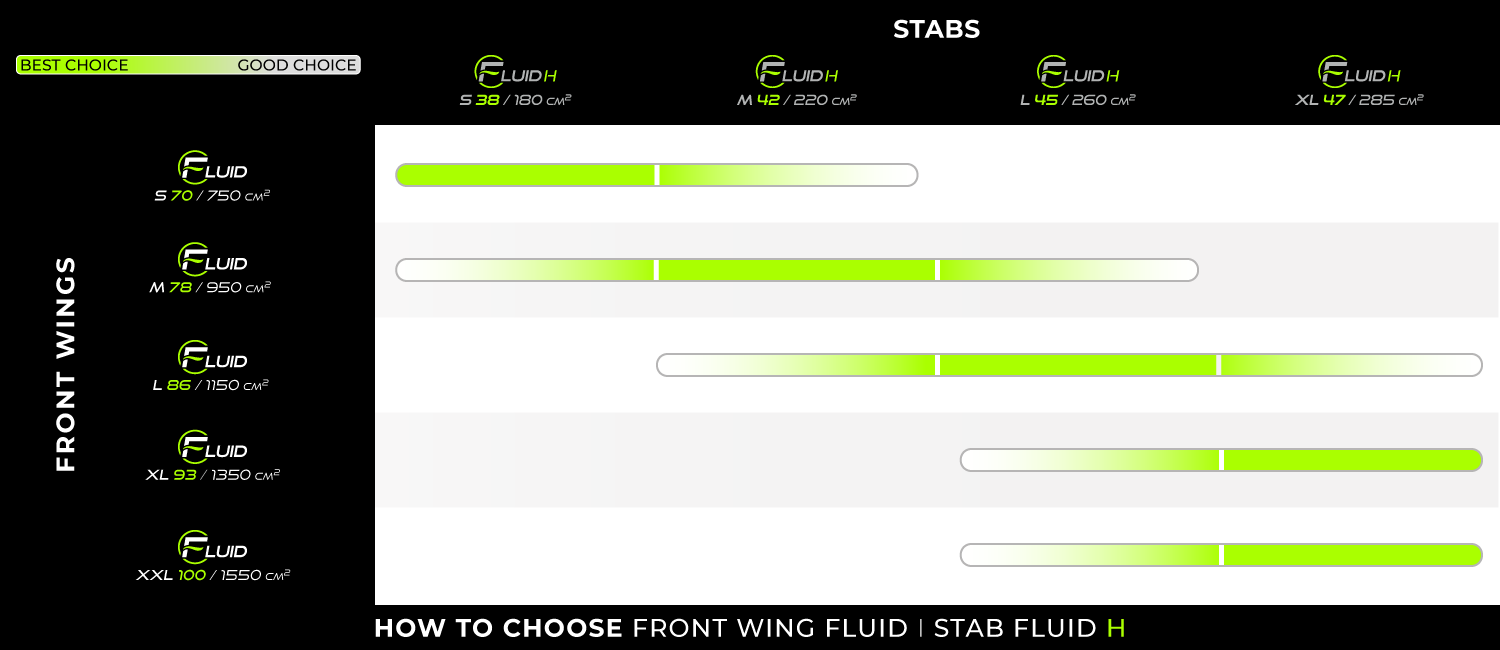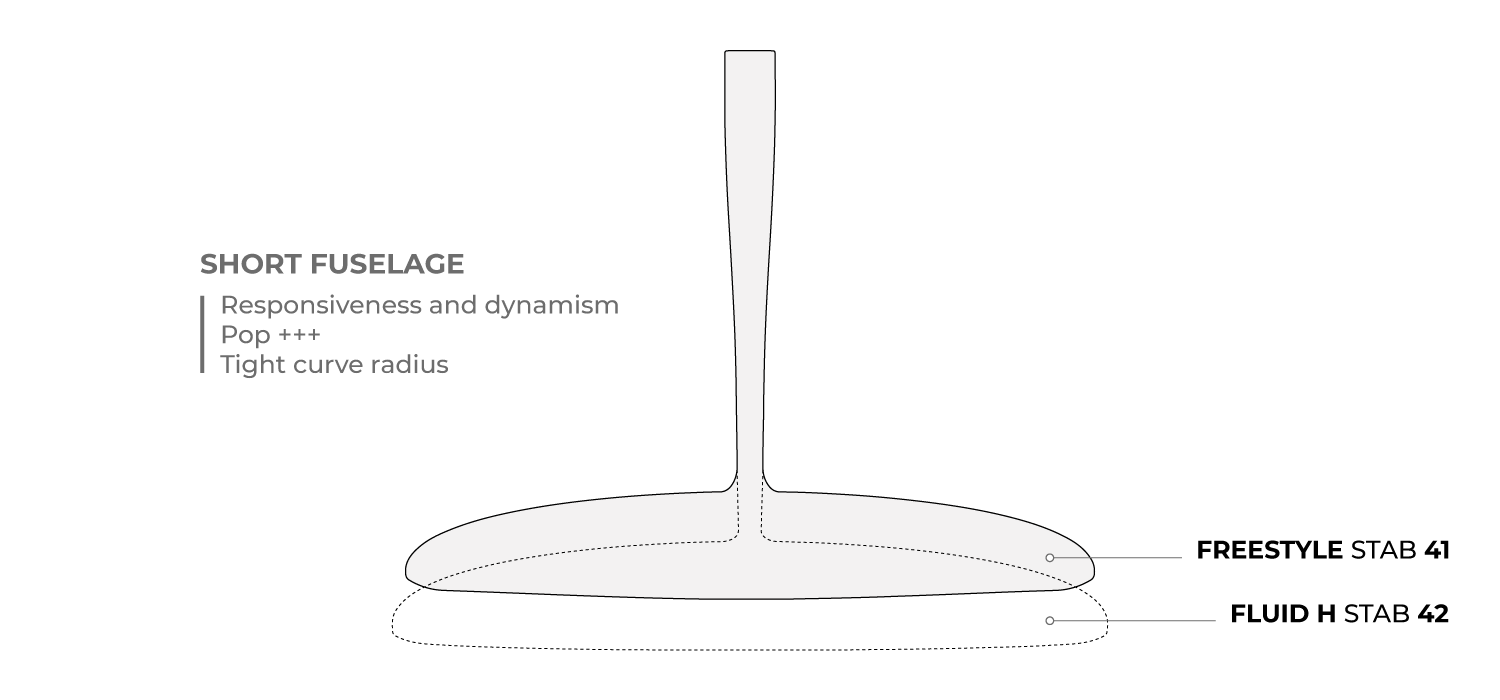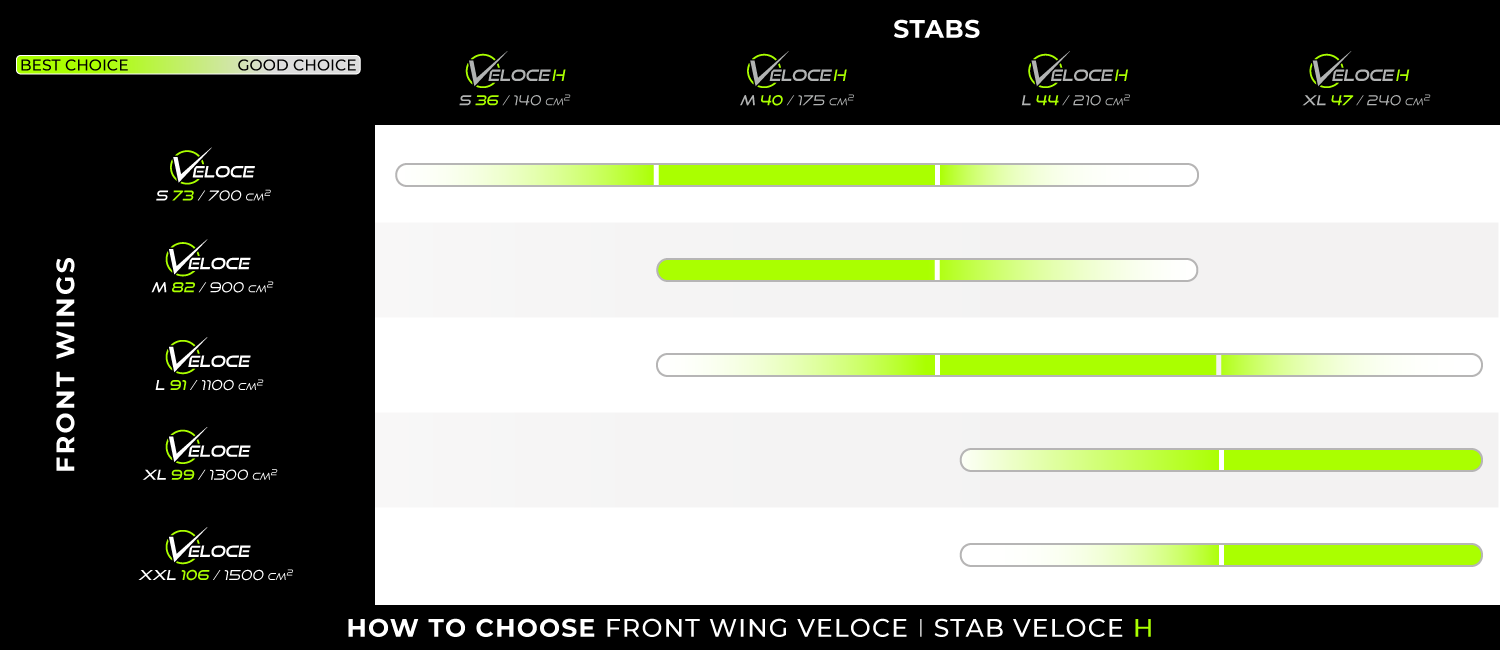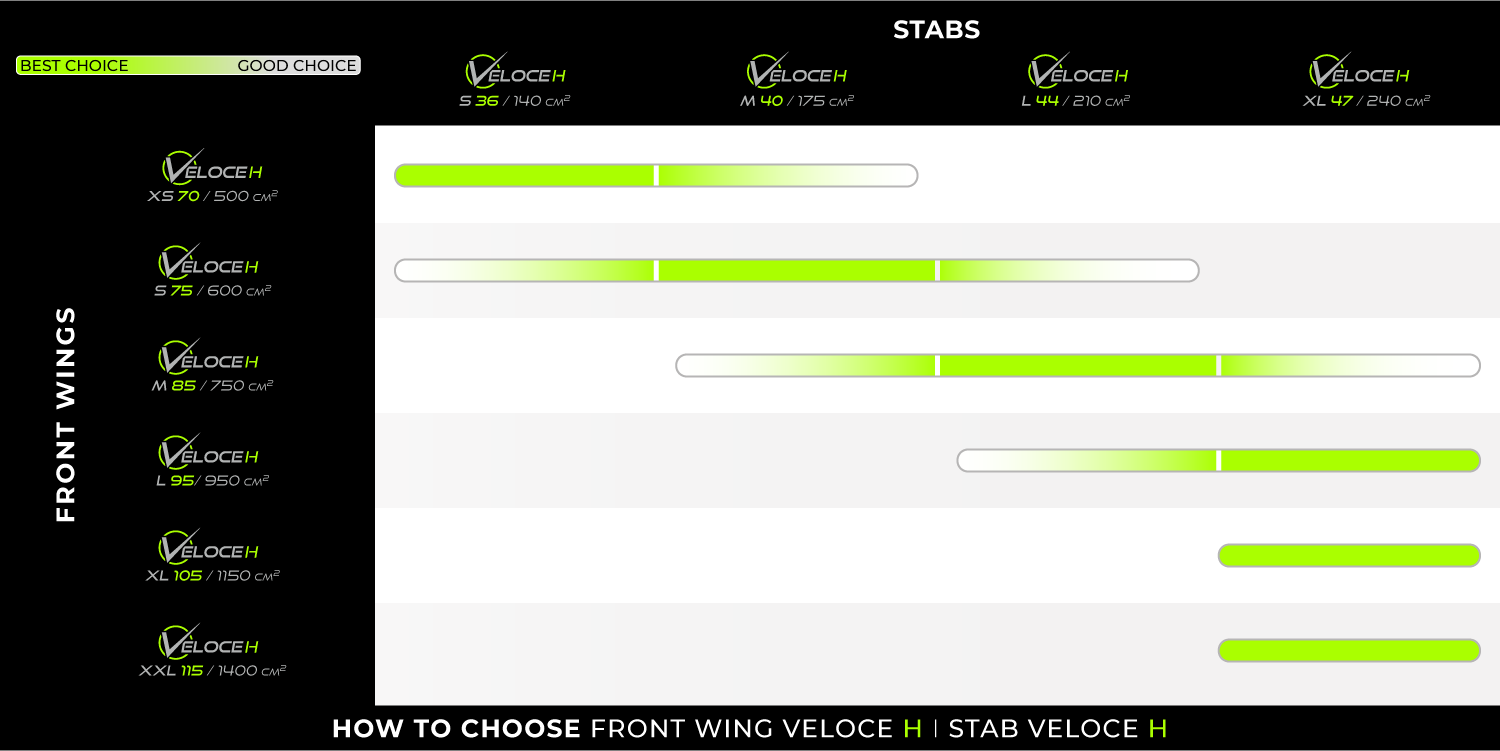Choose a V2 stab for your foil
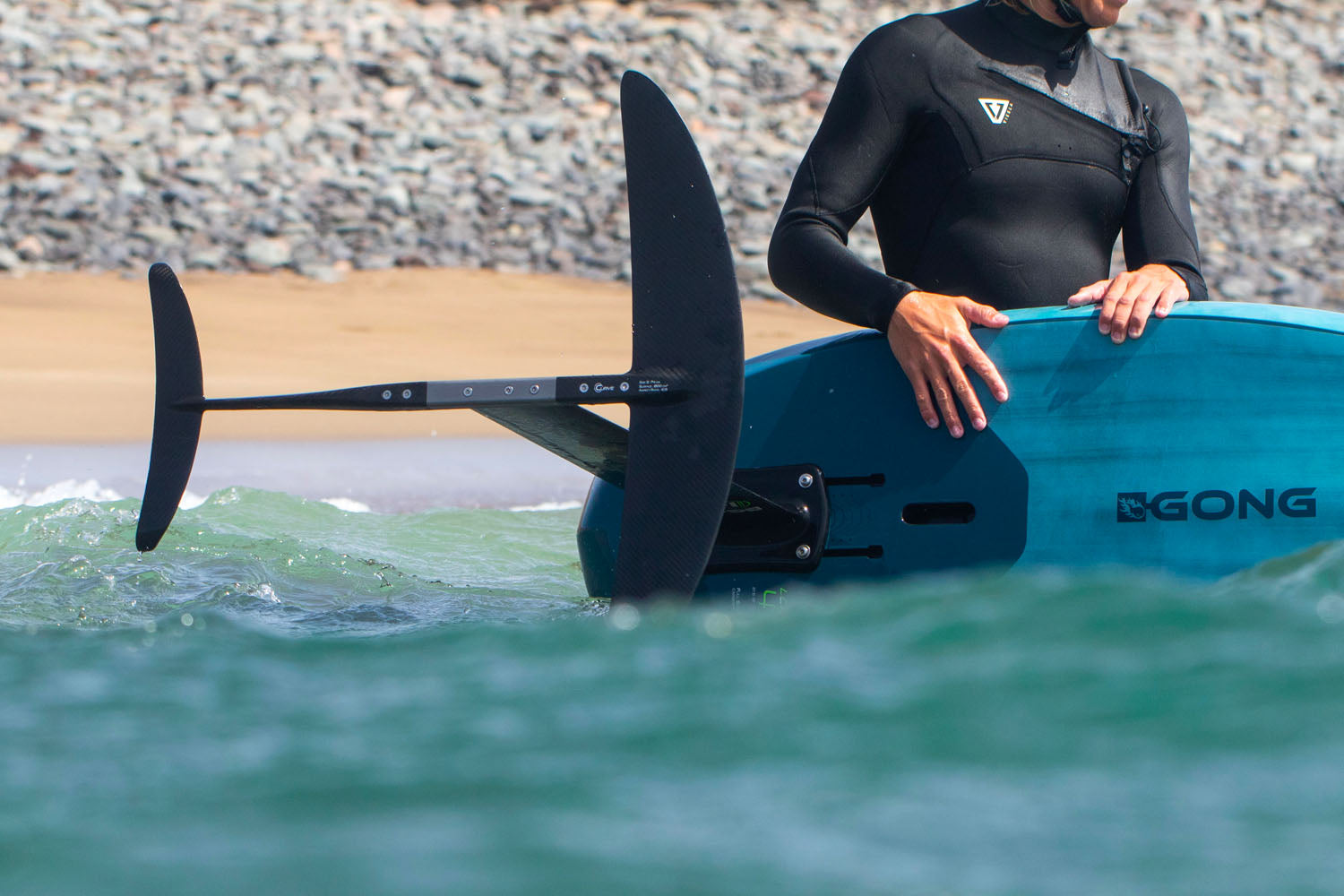
In this “How To” we explain the role of your stab, how to choose it in our V2 range and the recommended front wing / stab combinations.
The tail wing or stabilizer is a key element of your foil. Its function is to neutralize the natural tendency of your front wing to dive above a certain speed. So it’s basically a small reversed front wing. On a well-balanced foil set-up, the pitch down of the front wing is perfectly compensated by the pitch up of the stab.
A well-chosen stab will allow you to extract the full potential of your front wing and match your favored style of riding.
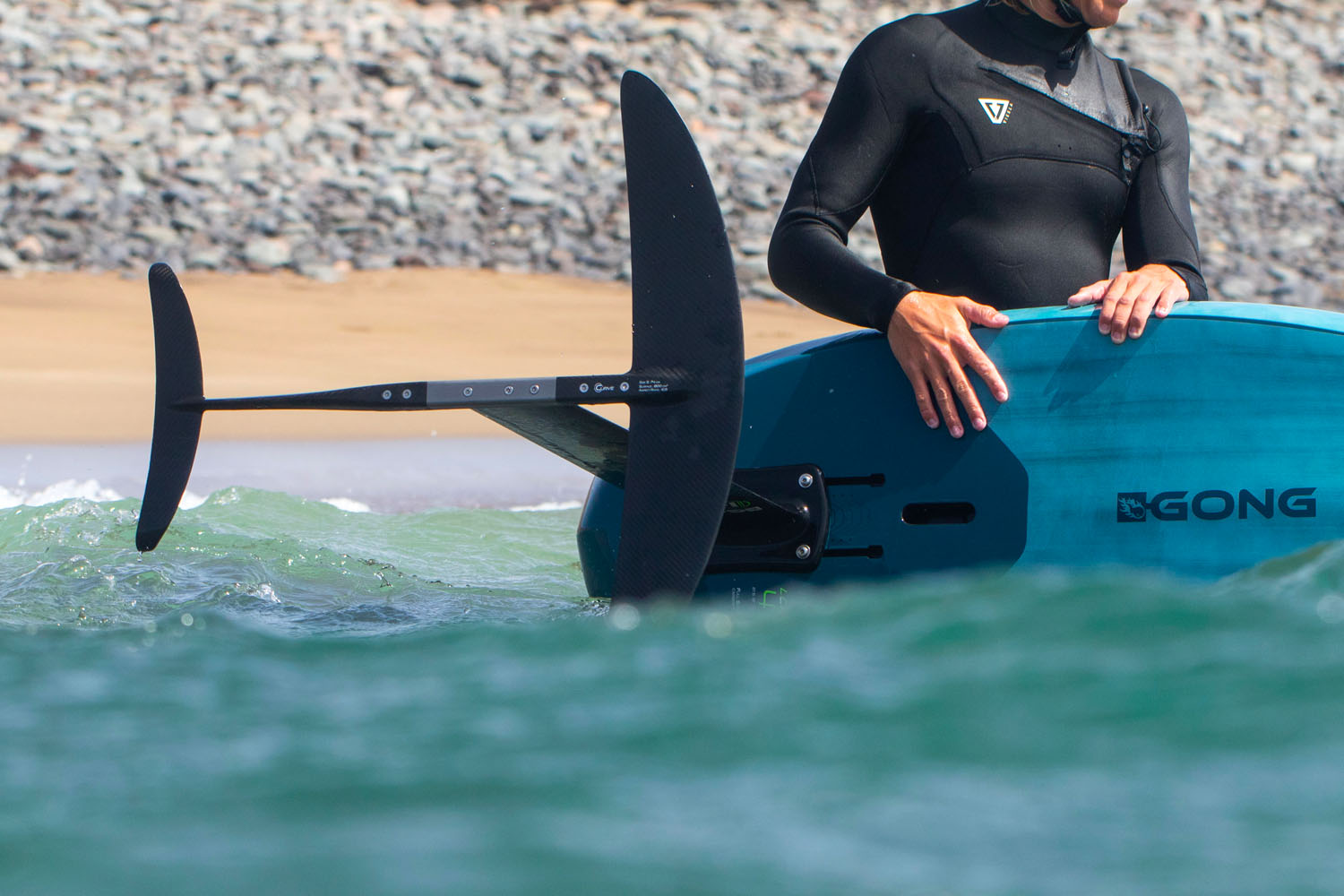
The 3 axis of stability of your foil
Finding balance on a foil board is a different story than staying on your feet on a classic board. Basically, from your takeoff, you are no longer gliding on a hull but flying on an airplane with the deck of your board as the cockpit. To control this flight, you need to find stability on 3 axis: pitch, roll and yaw.
Depending on the foil set-up you are using, you can fine-tune this balance. Beginners will want an ultra stable flight and those with more experience, a foil as free as possible. Learning which details influence the stability of your foil will help you to better understand and above all to choose the most suitable foil parts.
If the axis of stability are fresh news to you, we recommend that you read this article.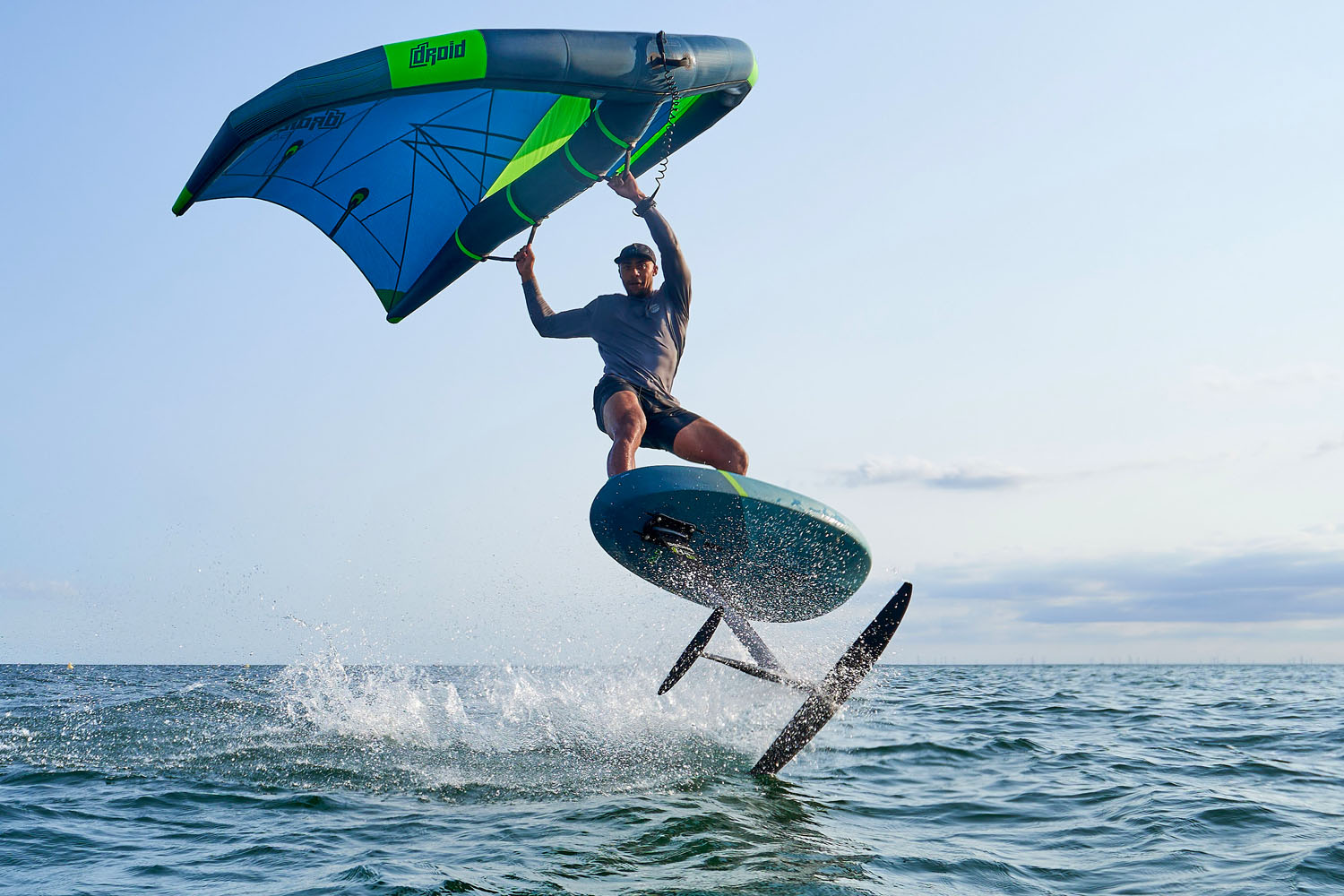
A large choice for specific needs
The diversity of foilers, in terms of size and level, and the possible foil uses call for a large choice of stabs: X-Over stab, Curve stab, Freestyle stab, Fluid H stab, Veloce H stab and Sirus stab.
In a sport where the sensations are delicate and decisive for your pleasure on the water, the choice of equipment is key! Rest assured, finding the right stab can be done in just a few iterations. Identify the program/use, adjust the finesse of the desired sensations and compose with the needs of our quiver.
1. Your stab must match your front wing: It is ideally designed for the same program and has a corresponding size. This means that if you have identified your front wing, the choice of stab is pretty much done. For example, an X-Over L front wing would be ideally associated with an X-Over stab of the size recommended in its buying guide (see our charts bellow). 2. You can, in a reasonable way, deviate from this first rule in order to refine the qualities of a foil set-up. Some examples:- Combine a Fluid L front wing with a Veloce H 40 stab that has a reduced chord and thickness for maximum glide and speed.
- Associate a Sirus L front wing with a Fluid H 45 stab which unlocks the pitch stability a bit more than a Sirus 53 stab, as the latter develops a longer span.
- Use a Freestyle stab rather than a Fluid stab to improve your pop thanks to a shorter span.
- Adopt a Curve stab whose winglets on the tips improve yaw balance.
3. Compose a meaningful quiver. A stab can operate with several relatively close front wings as shown in the charts below. For example, you can choose a Fluid H 45 stab for both the Fluid XL front wing you use in light winds and the Fluid M you use in more solid conditions. However, keep in mind that the stab restricts or conversely releases the performance of your front wing. To be on point with a Fluid M front wing, the Fluid 42 or even 38 stab will give you the best performance. A choice to put into perspective with your objectives on the water. Slightly oversizing the stab compared to your front wing can calm the foil if it’s too lively to your liking. A fuselage extension can also be a solution to make it less wild.
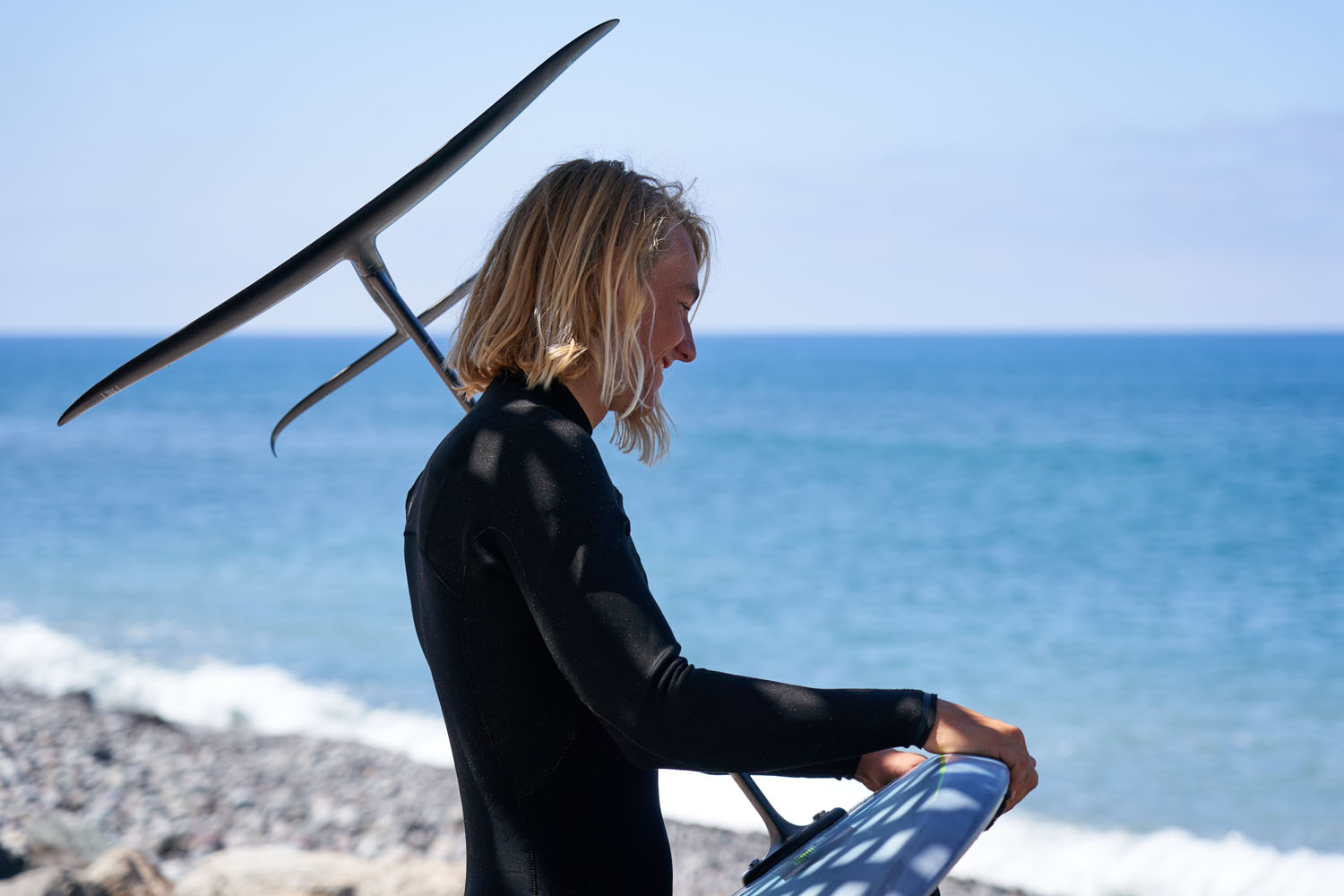
THE STABS ADAPTED TO YOUR FRONT WING:
For many years we used the same type of square interlocking system on our V1 and V2 fuselages. All stabilizers from our old ranges use it. But to push the performance of our foils to the highest level, we have made our fuselage evolve to gain glide, weight and performance. The Pro fuselage was born, shorter and lighter, with a self-tightening trapezoidal interlocking system.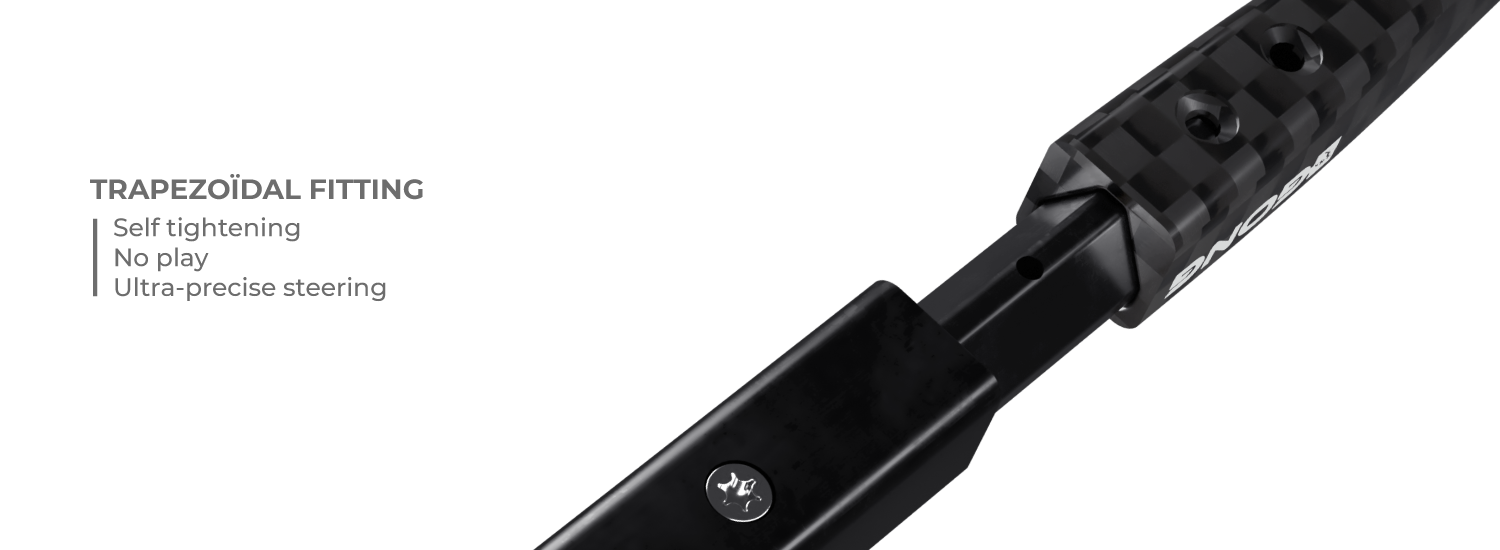 All our latest stabs use this system : X-Over stab, Curve stab, Freestyle stab, Fluid H stab, Veloce H stab and Sirus stab.
All our latest stabs use this system : X-Over stab, Curve stab, Freestyle stab, Fluid H stab, Veloce H stab and Sirus stab.
The choice of the stab of your foil depends primarily on your experience. The expectations of beginners are not the same as those of a Pro. The first will opt for a stab which calms down their foil while those with more experience will give priority to performance and sensations.
Below we present the recommended front wing / stab combinations:
- With an X-Over front wing
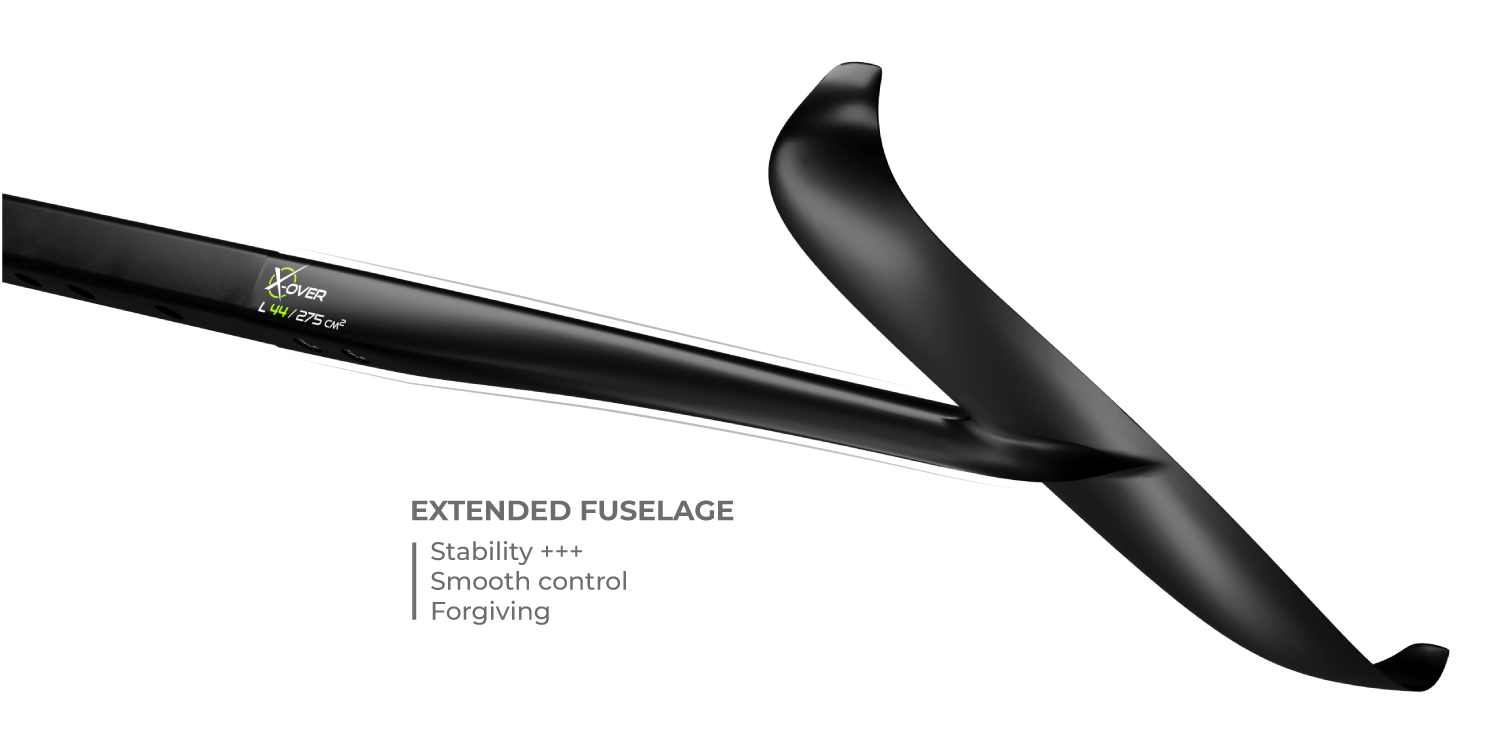
- With a Curve front wing
We recommend the Curve stab which is perfect for foilers looking for maximum performance in curves. This is really the DNA of this stab, it is both easy to handle at low speed and super stable on high speed turns thanks to a grip that acts to keep the foil on its trajectory.
The shape of the Curve stabs is designed for stability in curves and natural rail to rail.
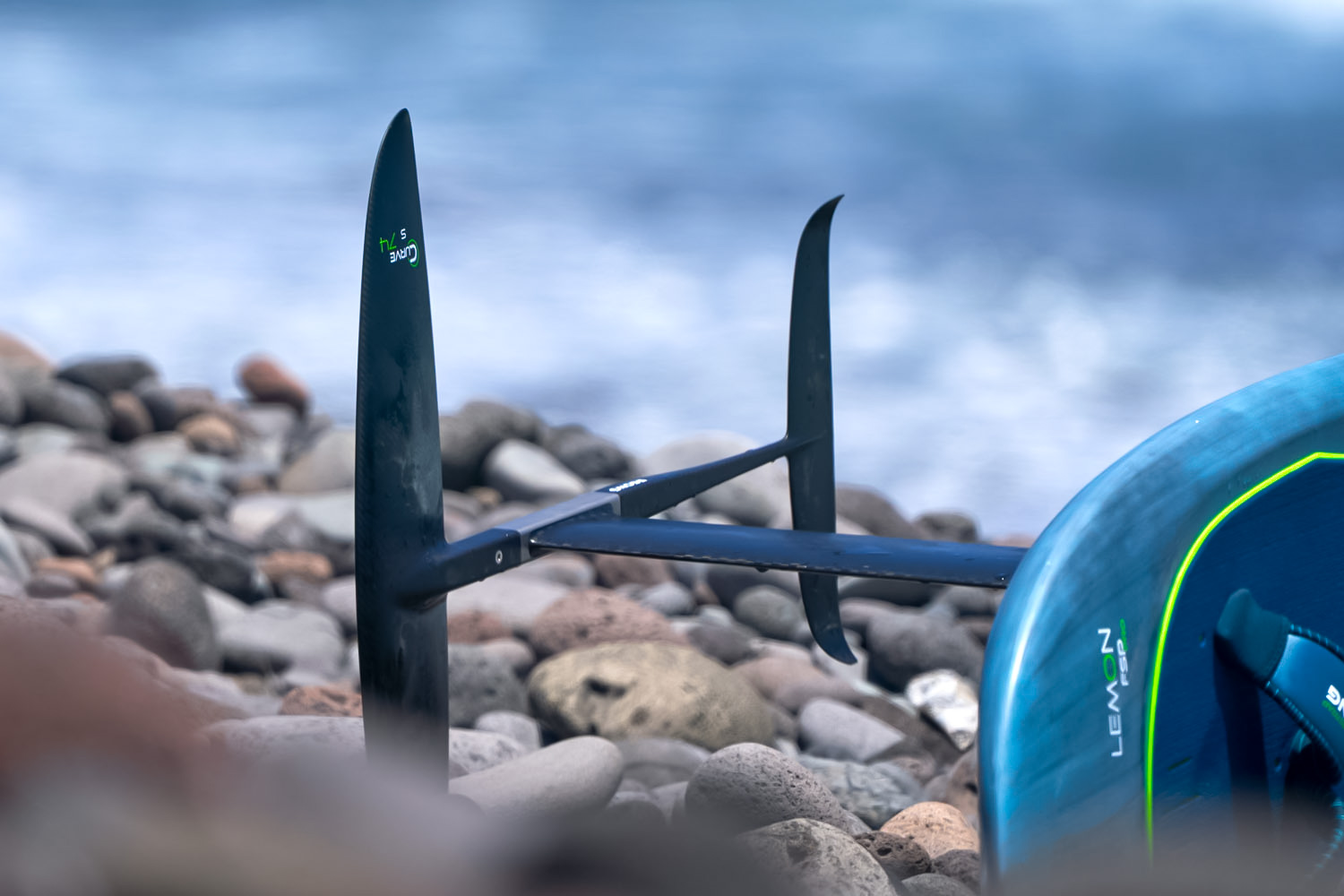
- With a Curve H front wing
To match the high aspect ratio of the Curve H we recommend the Fluid H stab whose shape is dedicated to finesse and high paces. This is the essence of a high aspect foil, glide, speed and lift. The Fluid H stab perfectly supports these qualities without harming the rail to rail that we love with the Curve or Fluid front wings.
If you have an intermediate level, you can opt for a Curve stab which will smooth out the trajectories with a drive that is more guided in drifting but still very reactive in turns.
For larger sizes (3XL-H to 6XL-H), we also recommend using the Sirus stab, which boosts efficiency in low-power disciplines (small waves, light wind, etc.). If you’re looking for pumping efficiency, prefer it in moderate sizes (40 to 50) for their reactivity in pitch. When looking for speed, prefer it in large sizes (50 to 63) to more easily keep the foil towards the surface after acceleration.
- With a Fluid front wing
To make the qualities of your Fluid front wing come to life, the Fluid H stab is undoubtedly the best choice because it generates a fast and lifty glide and allows radical curves. The outline is thinner at the tips to allow for insane rail to rail. Hardcore turns or big curves, this is the stab you want for the best handling.
The shape of the stabs Fluid H is dedicated to finesse and high speed glide. The slenderness of this stab gives it a lot of finesse by significantly reducing the chord and the thickness of the profile. As a result, we improve performance since we have a profile that drags much less water.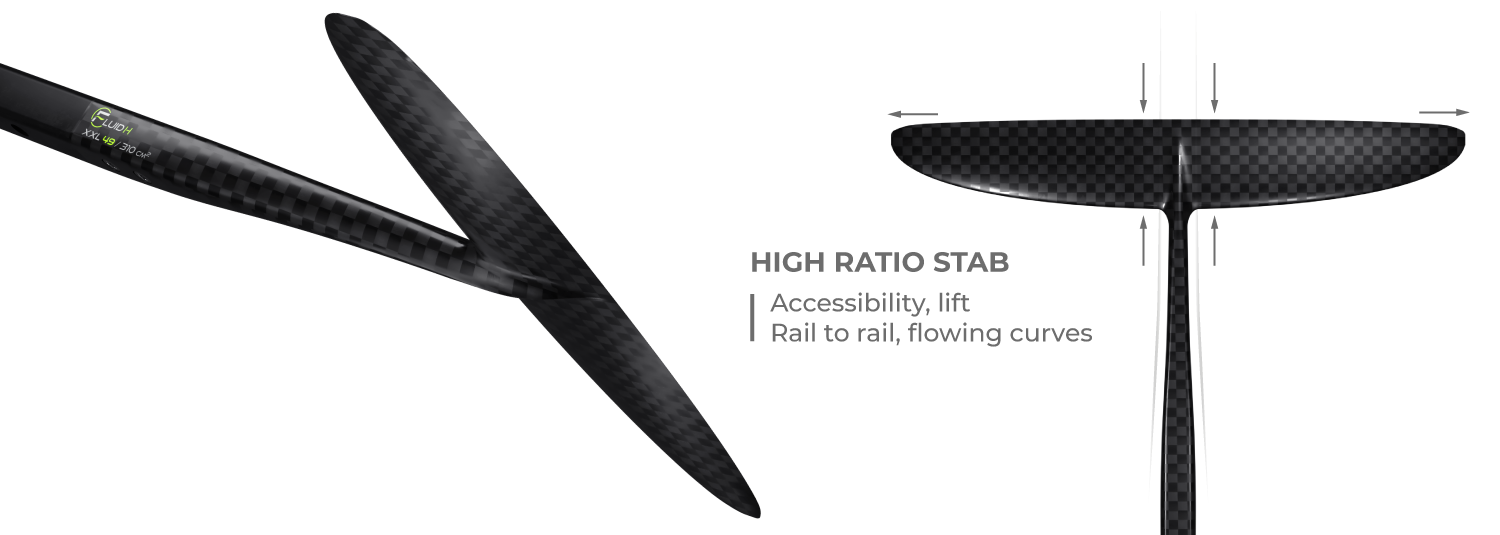
If you want maximum pop to send tricks or make your set-up more nervous in curves, the shorter span of the Freestyle stab is an excellent option. This high aspect stab maintains a very high gliding speed, but its shorter span, from 3cm up to 9cm, allows the turns radius to be reduced: a key element for pop and for radical turns.
- With a Fluid H front wing:
A high aspect front wing like the Fluid H calls for the use of a stab which supports its phenomenal glide. We recommend the Fluid H stab as a first choice. It is a high aspect stab for foilers who want to reach maximum speed and have an incredible glide when surfing, while remaining a lifty and simple stab.
For the very large sizes of the Fluid H front wing (3XL-H and 4XL-H) the Fluid H stab is the preferred option for a good level rider who wants speed and control. We also recommend using the Sirus stab, which boosts efficiency in low-power disciplines (small surf, light wind, etc.). Its longer span, the lift of its thickness and its high aspect facilitate the use of large front wings like the Fluid 3XL-H and 4XL-H. When looking for pumping efficiency, we will prefer the Sirus stab in moderate sizes (40 to 50) for their reactivity in pitch.. When looking for speed, we will prefer it in large sizes (50 to 63) to more easily keep the foil towards the surface after acceleration.
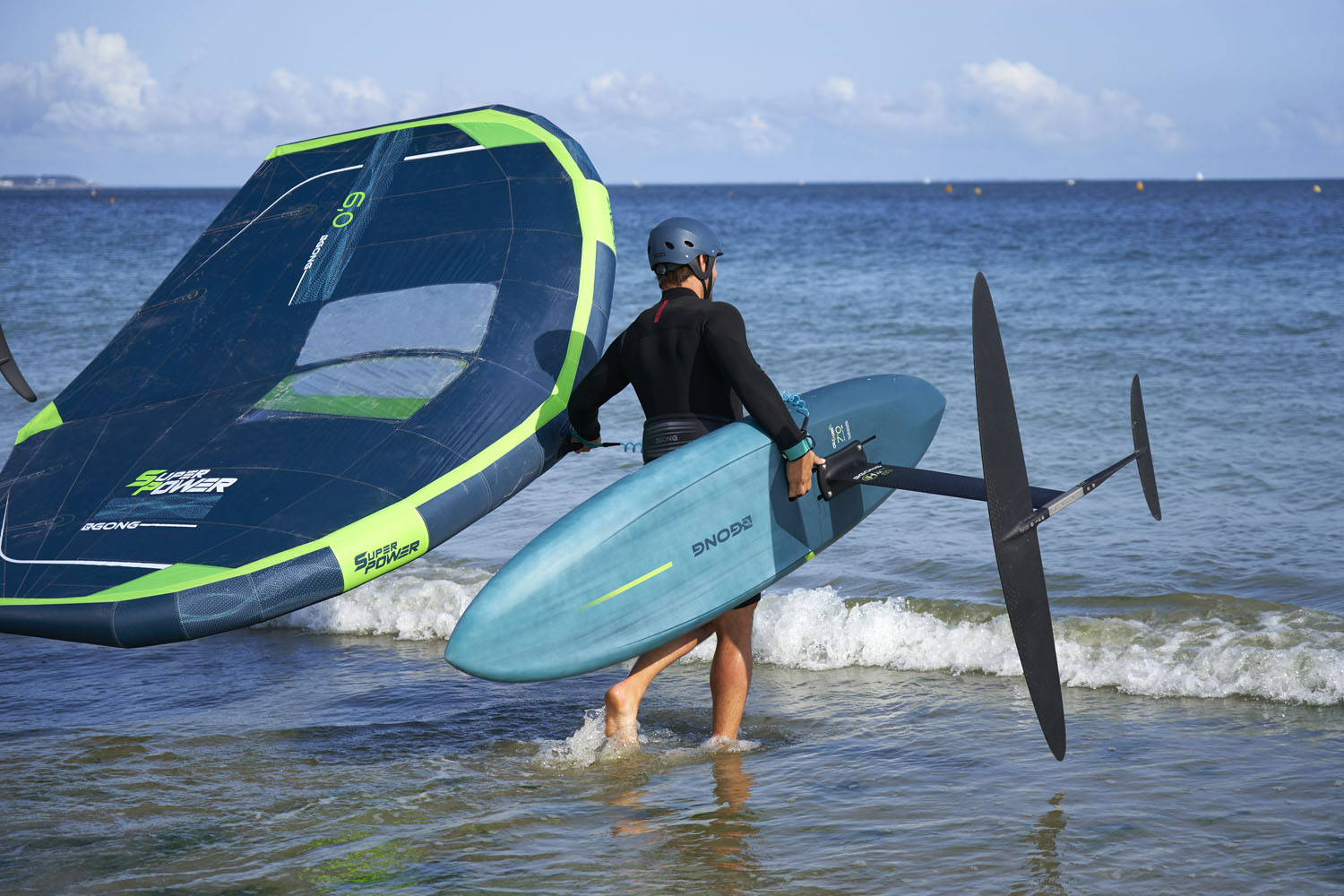
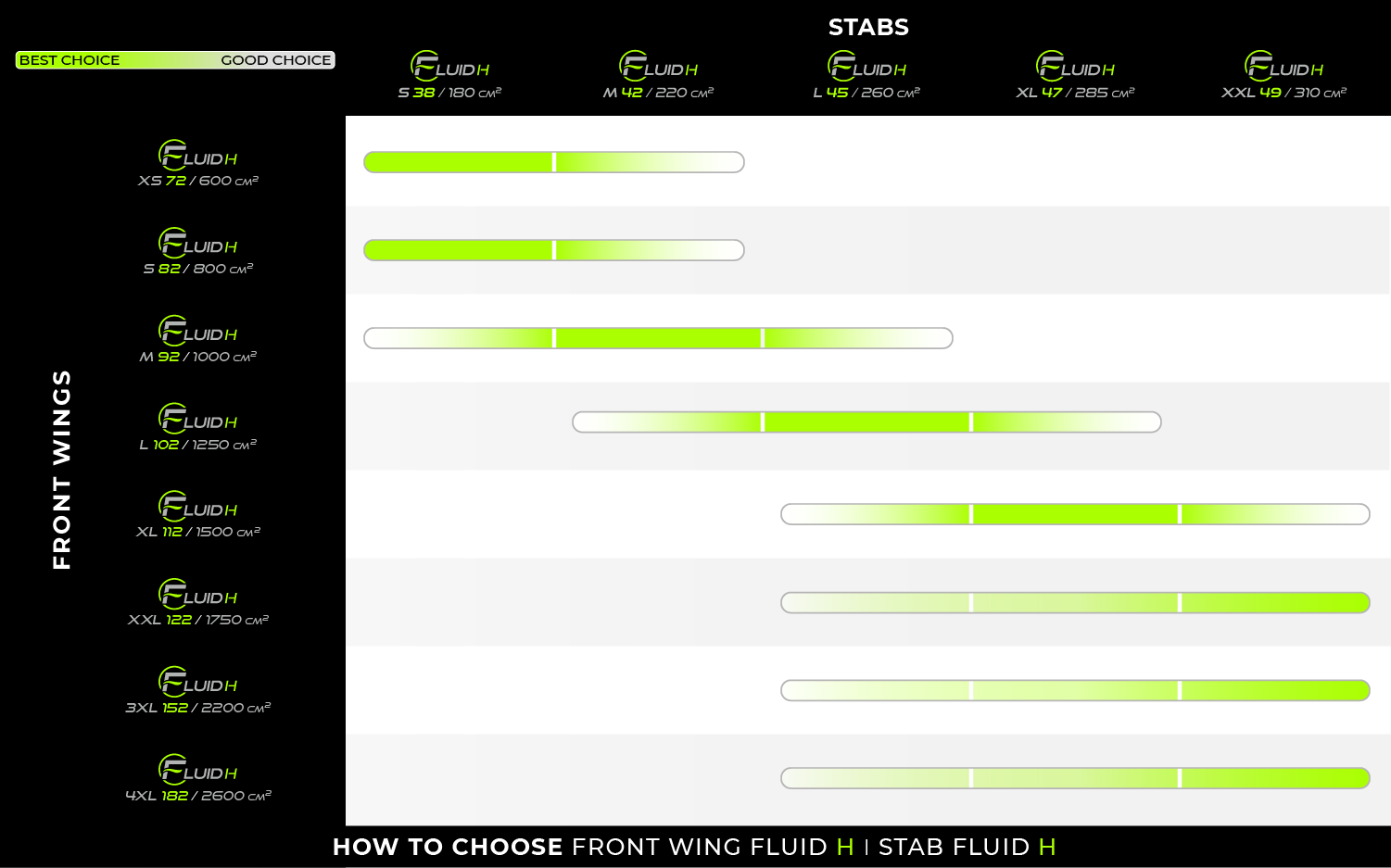
- With a Veloce front wing:
The Veloce is a front wing that we love for fast surfing and high-speed downwinders! Its glide and pumping abilities are simply incredible. To support its qualities, it is best associated with a Veloce H stab. It is the magic stab for riders looking for maximum speed and glide.
We find in this shape the DNA of the classic Veloce stabs while pushing its “velocity” character even further. The slenderness of this stab gives it a lot of finesse by significantly reducing the chord and the thickness of the profile. As a result, we improve performance since we have a profile that drags much less water.
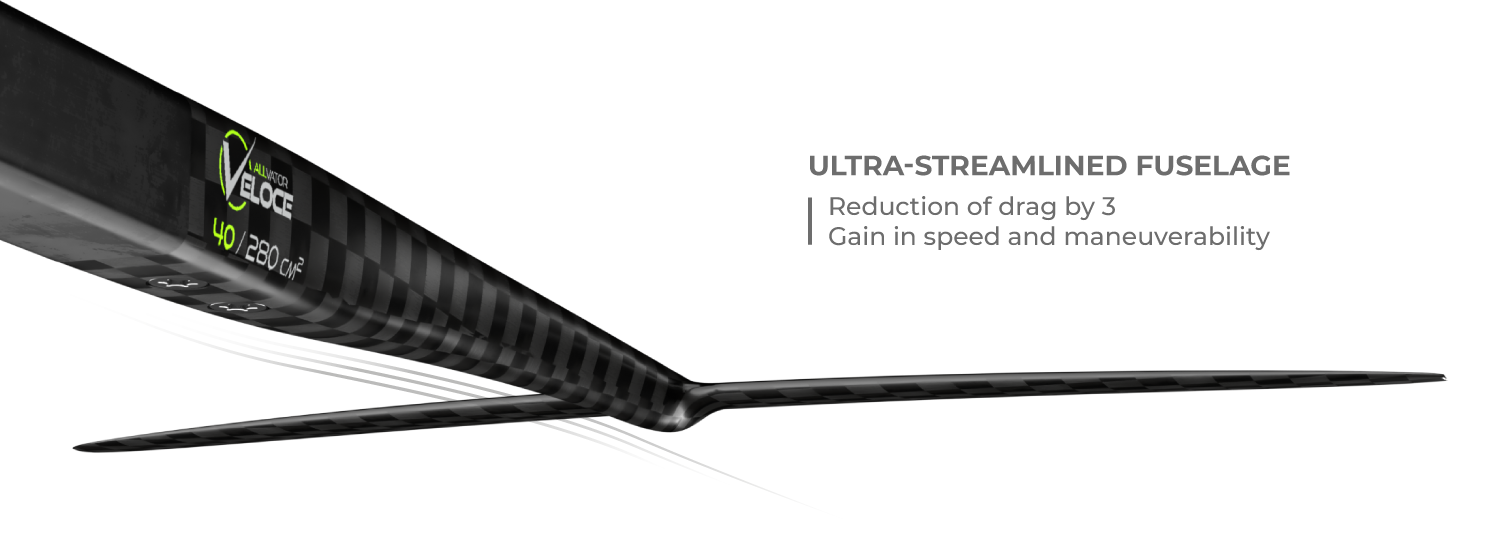
If you want maximum pop to send tricks or make your set-up more nervous in curves, the shorter span of the Freestyle stab is an excellent option. This high aspect stab maintains a very high gliding speed, but its shorter span, from 3cm up to 9cm, allows the turns radius to be reduced: a key element for pop and for radical turns.
- With a Veloce H front wing:
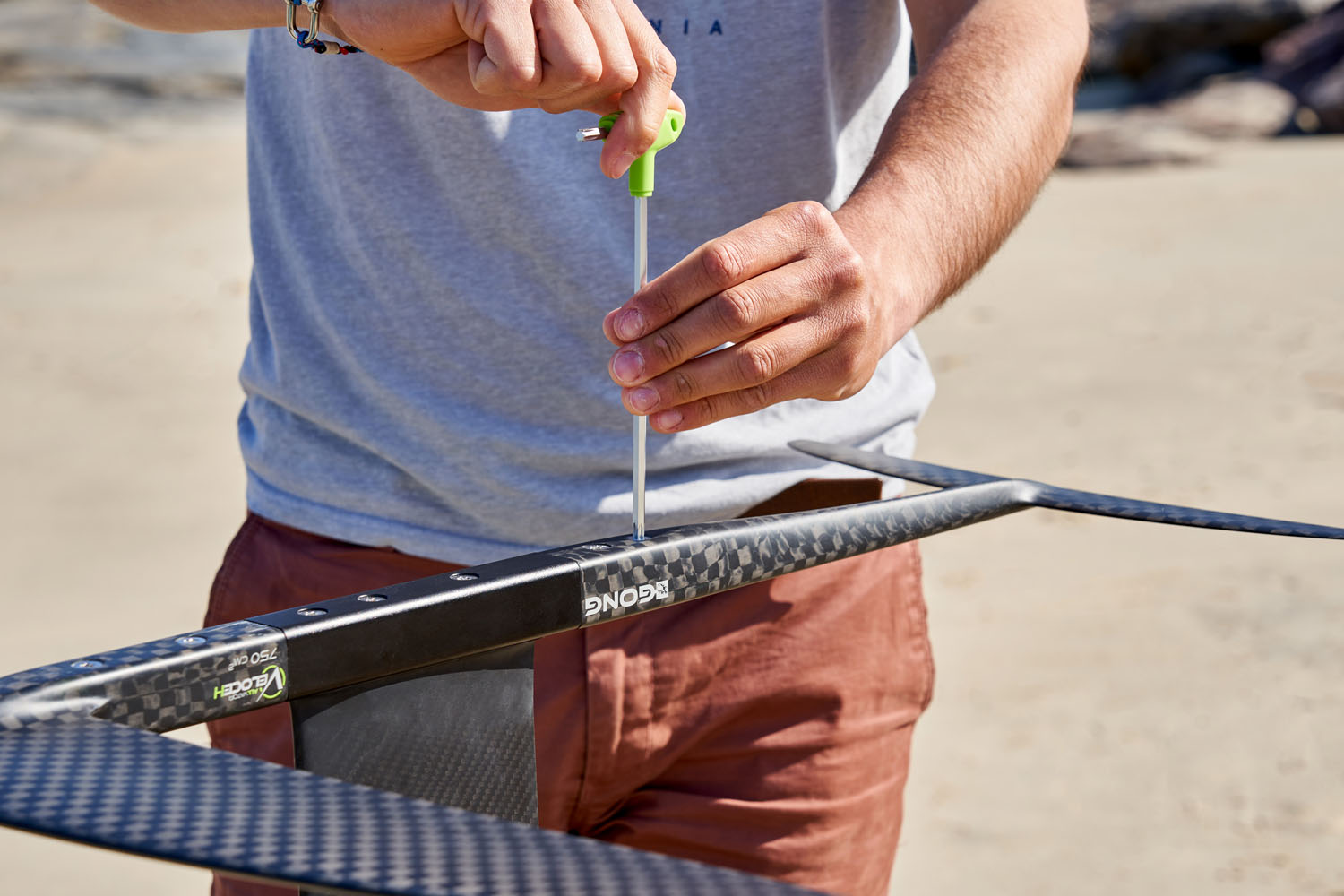
- With an Ypra front wing:
The Ypra front wing is the ultimate Race wing. Its very thin thickness, its really thin leading edge, and its very high aspect deliver the performance to reach insane top speeds. Provided you have a stabilizer that lets it glide forward without any resistance.
This stab is the Veloce H stab. It is the magic stab for foilers looking for maximum speed and glide. When we talk about speed, we are obviously talking about max speed but also about average speed of movement over the spot.
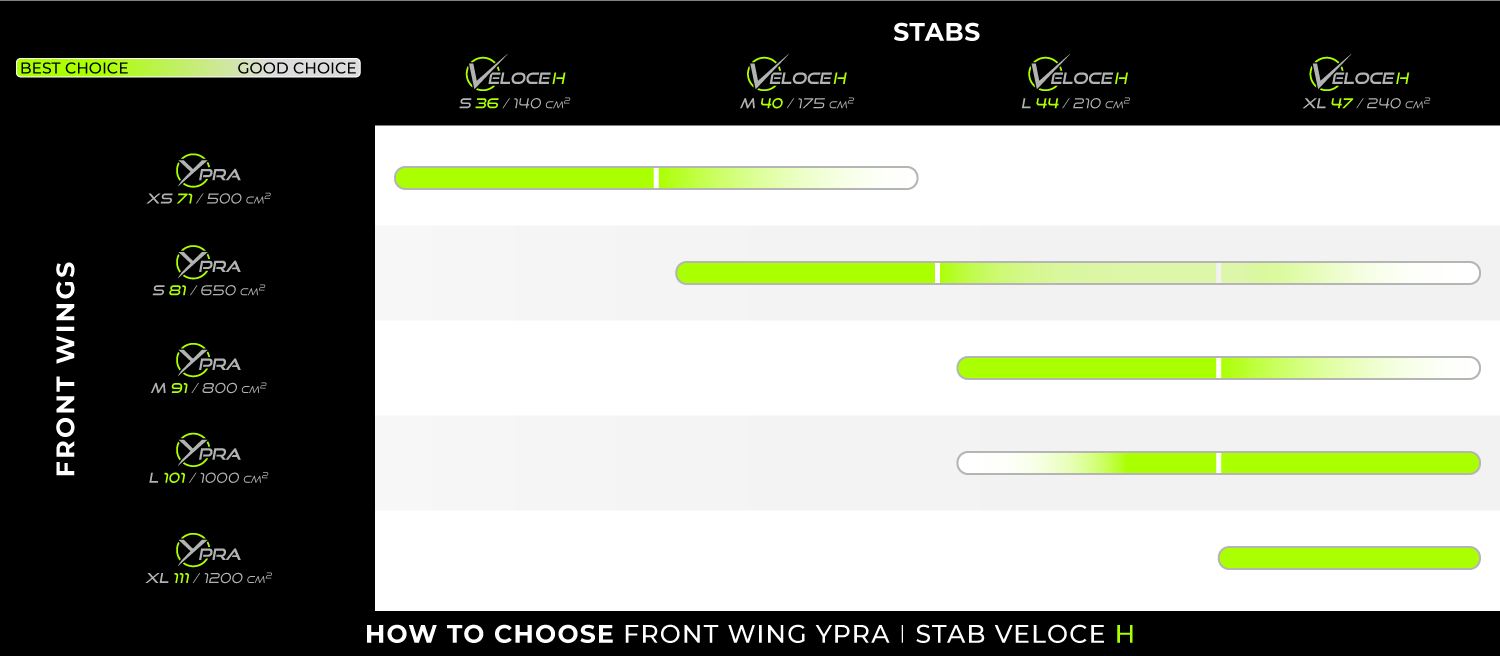
- With an Ypra-S front wing:
The Ypra-S for Slalom also calls for equipping yourself with a Veloce H stab if your goal is to smoke everyone on the spot 😉 However, slalom sailing is not the only strong point of this front wing! The extreme versatility of this front wing, which is a multi-world champion in Surf-Freestyle, Race and Big Air, opens up the choice to a Fluid H stab for wave riding or a Freestyle stab to send tricks. 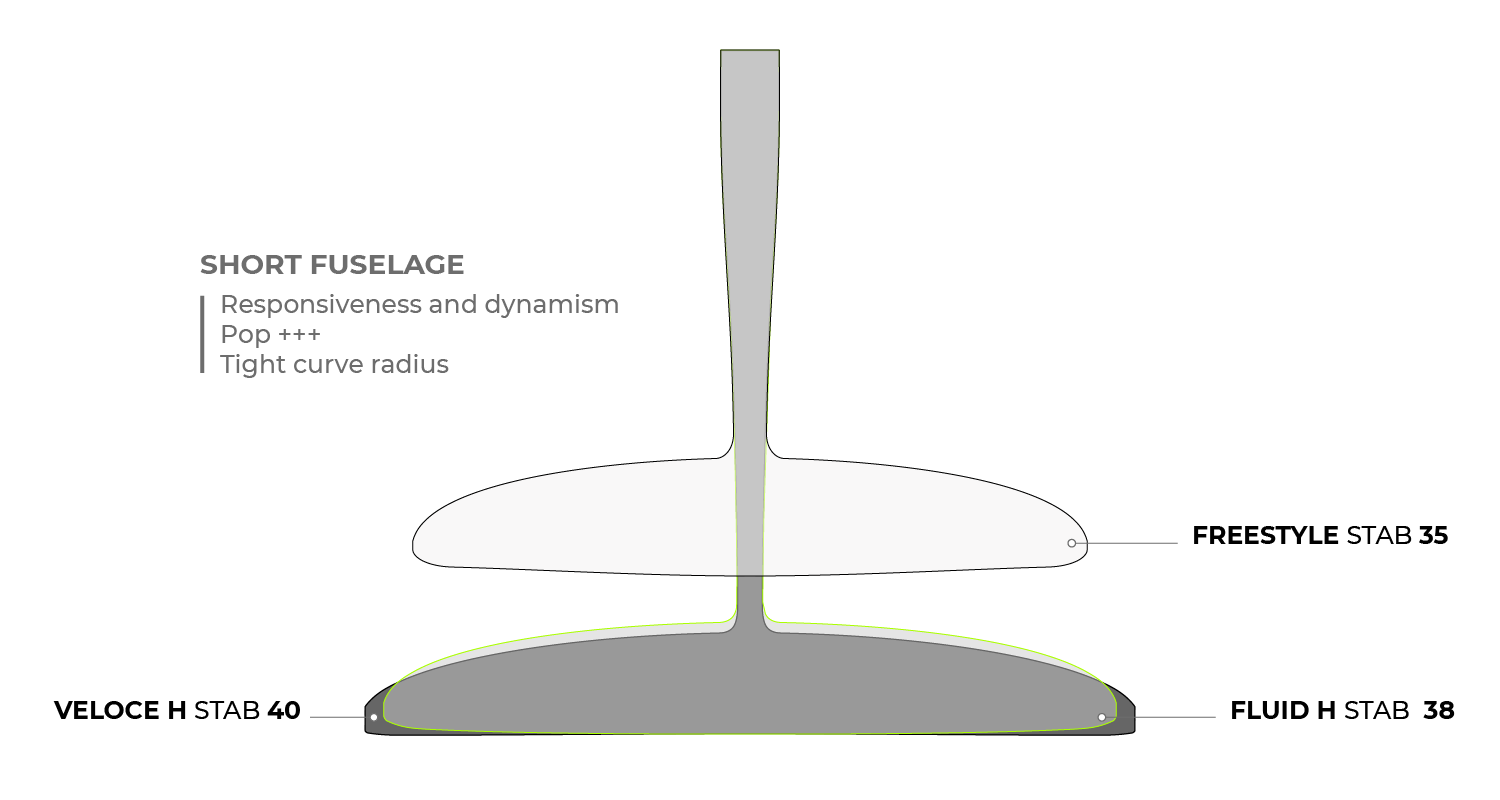
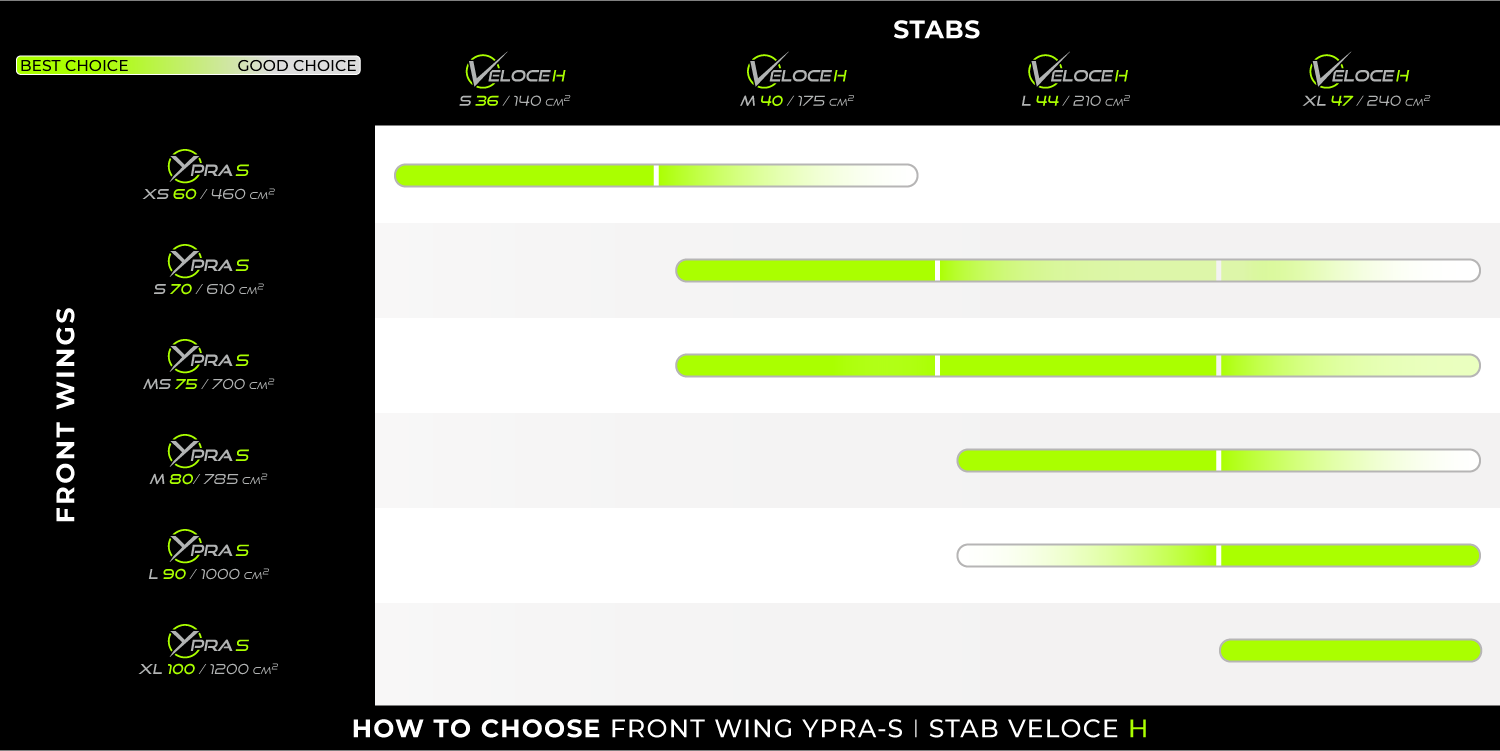
- With a Sirus front wing:
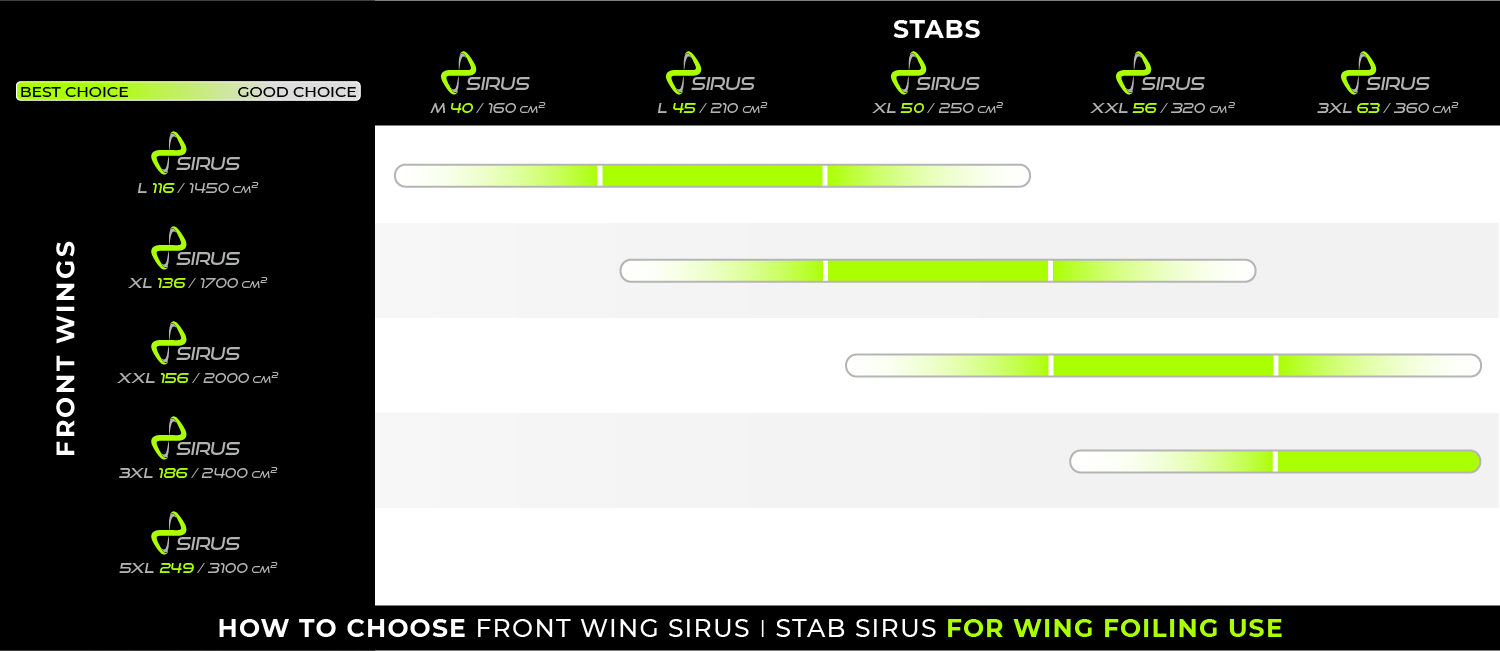 If the Sirus is your front wing for pumping on the flat, we advise you to choose a slightly smaller Sirus stab which will make your set-up more dynamic when pumping. See our recommendations below for this use. You could also choose a Fluid H 49 stab for pumping with a Sirus 136 or 156. For surf foiling with a Sirus 116 in small waves, the Fluid H 47 will provide more fluidity in the rail to rail.
If the Sirus is your front wing for pumping on the flat, we advise you to choose a slightly smaller Sirus stab which will make your set-up more dynamic when pumping. See our recommendations below for this use. You could also choose a Fluid H 49 stab for pumping with a Sirus 136 or 156. For surf foiling with a Sirus 116 in small waves, the Fluid H 47 will provide more fluidity in the rail to rail. 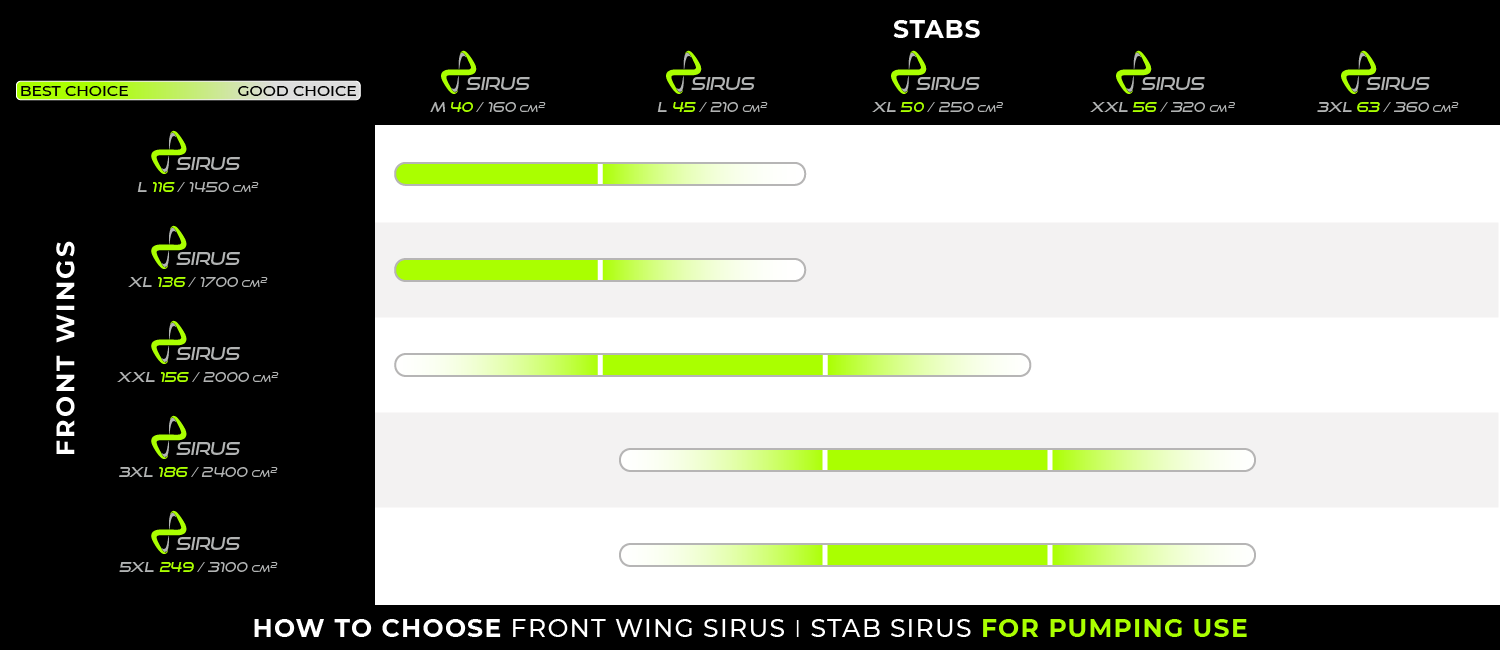
Analyze the specs of our range to fine-tune your set-up!
As explained above, the combinations that function together are not limited to the recommendations in the charts above. We invite you to read this article on the specs of your foil parts if you wish to fine-tune your set-up.
